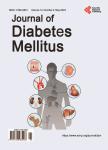What Happens to Modifiable Cardiovascular Risk Factors over Time in Type 2 Diabetes? Experience from a Developing Country under Standard of Care Conditions
What Happens to Modifiable Cardiovascular Risk Factors over Time in Type 2 Diabetes? Experience from a Developing Country under Standard of Care Conditions作者机构:Department of Internal Medicine Faculty of Medicine American University of Beirut Medical Center Beirut Lebanon Department of Ophthalmology Faculty of Medicine American University of Beirut Medical Center Beirut Lebanon
出 版 物:《Journal of Diabetes Mellitus》 (糖尿病(英文))
年 卷 期:2016年第6卷第4期
页 面:307-317页
学科分类:1002[医学-临床医学] 100201[医学-内科学(含:心血管病、血液病、呼吸系病、消化系病、内分泌与代谢病、肾病、风湿病、传染病)] 10[医学]
主 题:Cardiovascular Risk Factors Diabetes Outpatient Clinic Lebanon T2DM
摘 要:Introduction: The complications of diabetes mellitus are the main reason for the morbidity associated with this condition, its cost, and its effect on quality of life. We have previously reported on the high prevalence of complications on a cohort of diabetic subjects. In the current study, we inquire what happens to the risk factors associated with these complications over time. Methods: The study is a prospective observational report over a two-year period where patients presented to the outpatient clinic for their usual care and had laboratory tests, retinal exams, and clinical assessment. They were treated as per American Diabetes Association guidelines in the outpatient department of the American University of Beirut. Results: Out of 220 subjects, 200 completed the two-year evaluation. There was no change in metabolic indices such as HbA1C, BMI, or smoking rates. However, there was mild, but significant improvement in LDL-C levels and blood pressure control. In parallel, there was an increase in the use of statins and ARB/ACEI category. However, their use remained much lower than in the reported literature. The population fared worse than the National Health Assessment and Nutrition Examination Survey (NHANES) population in most diabetes quality of care measures. The predicted 10-year vascular risk was 19%, similar to the calculated risk in a German population study. Conclusion: The lack of significant metabolic improvement points to a lack of effective lifestyle implementation measures, as well as to an under utilization of medical therapy. The approach to complications prevention needs to be more intense and multidisciplinary in nature in order to improve the patients’ outcome.



